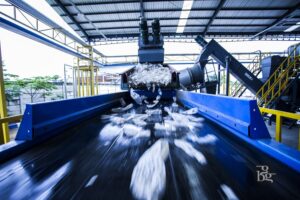Top 20 Aerospace Engineer Fresher Interview Questions
Table of Contents
Top 20 Aerospace Engineer Fresher Interview Questions
1. Can you explain what aerospace engineering is?
Example – “Aerospace engineering is a field that focuses on the design, development, testing, and production of aircraft, spacecraft, and related systems. It encompasses both aeronautical engineering (dealing with aircraft) and astronautical engineering (dealing with spacecraft).”
2. What motivated you to pursue a career in aerospace engineering?
Example – “Mention your passion for aviation or space exploration, and how it inspired you to choose aerospace engineering. Discuss any personal experiences or events that fueled your interest in this field.”
3. Can you explain the difference between aeronautics and astronautics?
Example – “Aeronautics deals with the design and study of aircraft that operate within Earth’s atmosphere, like airplanes and helicopters. Astronautics, on the other hand, focuses on spacecraft and systems designed to operate in the vacuum of space.”
4. What are the primary parts of an aircraft ?
Example – “The primary components of an aircraft include the airframe (fuselage, wings, and tail), engines (if applicable), avionics, landing gear, and control surfaces.”
5. What is the significance of aerodynamics in aerospace engineering?
Example – “Aerodynamics is crucial in aerospace engineering as it deals with the study of air flow over aircraft surfaces. Understanding aerodynamics is vital for optimizing aircraft performance, stability, and efficiency.”
6. Explain the basic principles of aircraft propulsion?
Example – “Aircraft propulsion is based on Newton’s third law of motion, which states that for every action, there is an equal and opposite reaction. Aircraft engines generate thrust by expelling a high-velocity stream of exhaust gases backward.”
7. What are the key challenges in designing aircraft for supersonic or hypersonic flight?
Example – “Supersonic and hypersonic flight presents challenges related to aerodynamics, heat management, materials, and control systems. Engineers need to address issues like sonic booms, extreme temperatures, and structural integrity.”
8. Can you discuss the role of control systems in aerospace engineering?
Example – “Control systems are essential in aerospace engineering for stabilizing and maneuvering aircraft. They include flight control surfaces, autopilots, and fly-by-wire systems, which ensure safe and precise operation”.
9. What is CAD, and how is it used in aerospace engineering?
Example – “CAD (Computer-Aided Design) is a software technology used to create 2D and 3D digital models of aerospace components and systems. Engineers use CAD to design and simulate aircraft and spacecraft before physical prototypes are built.”
10. How do materials play a vital role in aerospace engineering?
Example – “Materials selection is critical in aerospace engineering. Lightweight yet strong materials like composites and titanium are used to reduce weight while maintaining structural integrity and safety.”
11. What are the fundamental principles of orbital mechanics?
Example – “Orbital mechanics, also known as celestial mechanics, focuses on the motion of objects in space. The key principles include Kepler’s laws of planetary motion and Newton’s laws of motion and gravity.”
12. What are the main challenges in spacecraft design for long-duration missions, like interplanetary exploration?
Example – “Challenges include radiation protection, power generation and storage, propulsion systems, life support, and autonomous operation for extended periods in space.”
13. How do you stay updated with the latest developments in aerospace technology?
Example – “Mention your habit of reading industry journals, attending conferences, following aerospace news, and participating in online forums to stay informed about advancements in the field.”
14. Can you explain the concept of fly-by-wire technology?
Example – “Fly-by-wire is a flight control system that replaces traditional mechanical linkages with electronic systems. It allows for precise control and stability through computer-based algorithms.”
15. What is the significance of testing and validation in aerospace engineering?
Example – “Testing ensures that aerospace systems meet safety, performance, and reliability standards. It includes wind tunnel tests, flight tests, and simulations to verify design concepts.”
16. How do you handle unexpected challenges or failures during a project?
Example – “Emphasize your problem-solving skills, adaptability, and ability to work under pressure. Discuss a specific example of a challenging situation you successfully resolved.”
17. Describe a project or coursework from your academic experience that you are proud of?
Example – “Choose a project that demonstrates your technical skills and teamwork. Discuss your role, the project’s objectives, challenges faced, and the successful outcome.”
18. What do you think are the future trends in aerospace engineering?
Example – “Mention trends like electric propulsion, reusable spacecraft, green aviation, and advancements in artificial intelligence and automation as they relate to aerospace engineering.”
19. How do you ensure safety in aerospace engineering projects?
Example – “Safety is paramount in aerospace engineering. Mention risk assessment, redundancy in critical systems, adherence to regulations, and a culture of safety as key elements”.
20. Can you discuss the importance of teamwork in aerospace engineering projects?
Example – “Teamwork is crucial for success in aerospace projects, as they often involve interdisciplinary collaboration. Highlight your ability to work effectively in a team, communicate ideas, and contribute to project goals.”




